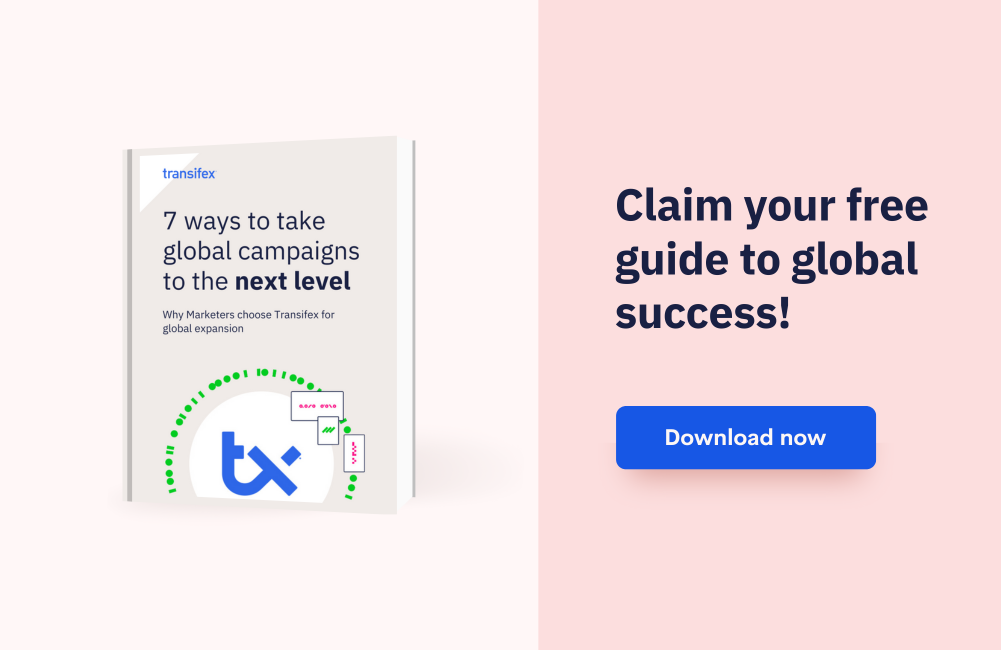Do you want to market your product or service in multiple countries and expand globally?
Then creating an international marketing strategy should be one of your main priorities.
But, adjusting your marketing strategies to align with each target market’s values, preferences, and cultural nuances may sound daunting. That’s why we walk you through the ins and outs of creating an international marketing strategy for your business, drawing inspiration from leading global brands.
Let’s dive in!
What is International Marketing?
International marketing involves tactics and action plans for promoting products or services outside domestic markets. It is essential for businesses that want to expand operations globally and reach potential customers in multiple countries. Moreover, it is a great way to increase brand awareness and develop a global audience!
One of the most important (and often most challenging) aspects of international marketing is adapting your products/services to match the foreign audience’s cultural characteristics, preferences, and needs. Although there’s no one-size-fits-all approach regarding localization, using the right marketing strategies and tools is crucial!
What are the Differences Between International Marketing and Global Marketing?
Although international marketing and global marketing have many things in common, they are different marketing initiatives with different approaches and intent.
Ιnternational marketing adjusts its strategies for each market, but global marketing strategies are universally implemented without being tailored to each foreign market.
The main differences between an international and a global marketing strategy are:
| International Marketing | Global Marketing |
|---|---|
| It is adjusted to every target market’s needs | It is applied uniformly |
| Customizes products/services to every target audience’s preferences | Markets the same product/service universally without modifying it |
| Adjusts advertising materials and creates different advertising content for every market | Uses advertising mediums with global reach |
| Marketing employees work at offices in the target country | All marketing employees work at the home country’s headquarters |
| Localized Social Media Pages for every target market | Same Social Media page on each platform for all target markets |
| Higher customer engagement due to the localized approach | Customer engagement might vary due to a non-localized approach |
| In-depth market research | Shallow market research |
| Lower risk | Higher risk |
| Different product/service prices for every target market based on local economies | Same product/service price on all global markets |
| Complies with local laws and regulations | Complies with international laws and regulations |
It is often more difficult to create a successful global marketing strategy than an international strategy, as the former is not adjusted to the cultural differences of the foreign target audience.
So, if you want to reduce risk and successfully expand into international markets, an international marketing approach is better than a global marketing one!
What are the Types of International Marketing?
If you want to expand your business globally, it is crucial to understand the different types of international marketing and choose the one that matches your goals. Let’s briefly explore the types of international marketing and their characteristics!
#1 Franchising
Franchising is when a business licenses its operations, including its brand and business model, in exchange for a franchise fee. The franchisee can sell the franchisor’s product or service in a foreign country using its brand name and concept.
#2 Export Marketing
Export marketing is when a business exports its products and services to foreign markets. In this type of international marketing, the products/services are produced in the home country and exported to international locations.
#3 Direct Investment
Also known as foreign direct investment (FDI), direct investment is when a business buys a fixed asset in a foreign country. This may include establishing a physical presence in the country, such as opening a retail shop or subsidiary.
#4 Joint Ventures
A joint venture is when a company partners with a business in a foreign market. The partnership is equally beneficial for both parties, but they also share the risks and costs in addition to the profits.
#5 Licensing
Licensing is an agreement where the licensor lets a licensee use its intellectual property. This includes patents, trademarks, copyrighted material, etc.
What are the benefits of international marketing strategies?
The main benefits of international marketing strategies include:
- Increased brand awareness beyond local markets
- Competitive advantage over competitors that don’t implement an international marketing strategy
- Increased revenue potential
- Opportunities for innovation
- Utilization of surplus production
How to Create an Effective International Marketing Strategy for Your Business
To reap the benefits of international marketing, you must invest in effective strategies that will reduce risk and accelerate your expansion in global markets.
#1 Conduct thorough international market research
International market research is one of the most important parts of creating a successful international marketing strategy.
Before localizing your marketing messages and campaigns for the target markets, you must know their local preferences and cultural nuances. Every market has unique cultural differences you should consider to localize your products and services effectively.
Besides understanding the cultural identity, international market research will give insight into the country’s economic and political landscape, laws, regulations, and demographics. This data can significantly help avoid mistakes that could hurt your brand reputation along the way!
#2 Create your strategy
Now that you have collected data, it is time to analyze it and use the results to make some important decisions!
Who will your audiences be? How do you want to promote your international business to the target markets? What is your value proposition? What is your pricing strategy for every new market? What traditional and digital marketing channels will you use to promote your products/services to global audiences?
You must answer all these questions and create a strategy that aligns with your goals – this is key to international marketing success!
#3 Localize Your Content and Marketing Campaigns
Localizing your content, marketing materials, and campaigns is one of the most important steps in your market entry strategy.
Using the data you have collected regarding your target market’s local tastes and cultural nuances, you should adjust your digital content accordingly. This includes updating your website and social media pages.
This process is typically complicated and costly unless you’re leveraging the right tools and automations. Transifex provides a centralized AI-powered hub to manage and optimize the entire localization process.
Discover the power of Transifex on your own content for FREE here – no sing-up required
International Marketing Strategy Examples
Numerous businesses worldwide have implemented an international marketing strategy to expand into foreign markets, increase brand awareness, and attract new customers.
While many failed in their international marketing efforts, others achieved global success. Let’s look at some of the most successful international marketing strategy examples!
#1 KFC
KFC’s localized website for Korea
KFC, one of the world’s leading fast-food chains, has been implementing international marketing strategies to increase its global audience. But how did KFC manage to have a presence in over 145 countries?
One of the secrets of KFC’s global success is localization! After conducting thorough market research in every target market, KFC has implemented a localized marketing approach tailored to each audience’s preferences.
One of the main international marketing actions KFC implemented was localizing its menu for every country. Recognizing that each country has unique food preferences inextricably linked with its cultural identity, the food chain introduced new menu options for each locale.
From the hearty pot pie for the US market to the sugar boba tea tarts for the Asian markets, KFC offers several localized options!
#2 McDonald’s
McDonald’s localized burgers for India
McDonald’s followed a similar approach, focusing on each region’s demographics and localizing their menu to cater to local tastes.
Since the 1970s, the international food chain has been selling its products internationally by leveraging franchising. While many of the options on its menu are the same in every country, there are many unique options. For example, the Japanese menu includes shrimp fillet and the grand teriyaki burger. The Indian menu includes the McAloo Tikki Burger and the Dosa Masala Burger.
Apart from localizing its menu, McDonald’s also localized its website for each country, showcasing its menu options in a culturally relevant manner.
#3 Spotify
Spotify’s localized website for Portugal
Spotify, one of the biggest music streaming platforms in the world, has successfully implemented an international marketing strategy to expand its presence in foreign markets. But, how did it manage to have over 300 million monthly users internationally?
It localized its content and features to match the preferences of each target audience! From regional playlists to local podcast suggestions and personal recommendations, it offers a localized experience that culturally resonates with international markets.
Spotify has also translated its content for each market, adjusted its user interface, and localized features, like currency, to cater to cultural nuances.
How can Transifex boost your international marketing strategy?
Using effective localization tools can be a crucial factor in the success of your international marketing efforts!
Transifex AI leverages the power of AI to help you localize content effectively for foreign markets, ensuring accuracy and cultural relevance. Not only that, but it can also boost your international marketing efforts by offering:
- Streamlined, scalable localization
- Human-quality, contextually relevant brand translations that help build international brand recognition and provide a cohesive brand experience across multiple languages
- Advanced automation that eliminates manual work, leading to up to 100% faster time to market and 10x reduced localization costs.
Are you ready to use the power of AI to effectively implement your international marketing plan?
Sign Up for a free trial today!
FAQs
What are the 4 Ps of international marketing?
The 4 Ps of international marketing are product, price, place, and promotion. All these factors are key to creating a successful product or service.
What are the 4 As of international marketing?
The 4 As of international marketing are acceptability, affordability, accessibility, and awareness.
What’s the difference between an international and a domestic marketing strategy?
An international marketing strategy focuses on promoting products and services in multiple foreign countries, while a domestic marketing strategy focuses on marketing activities in a single country.













